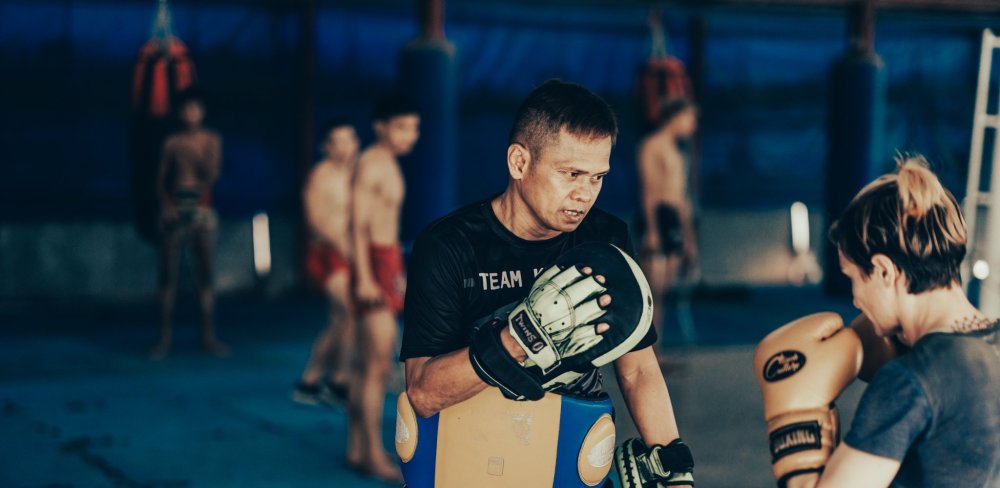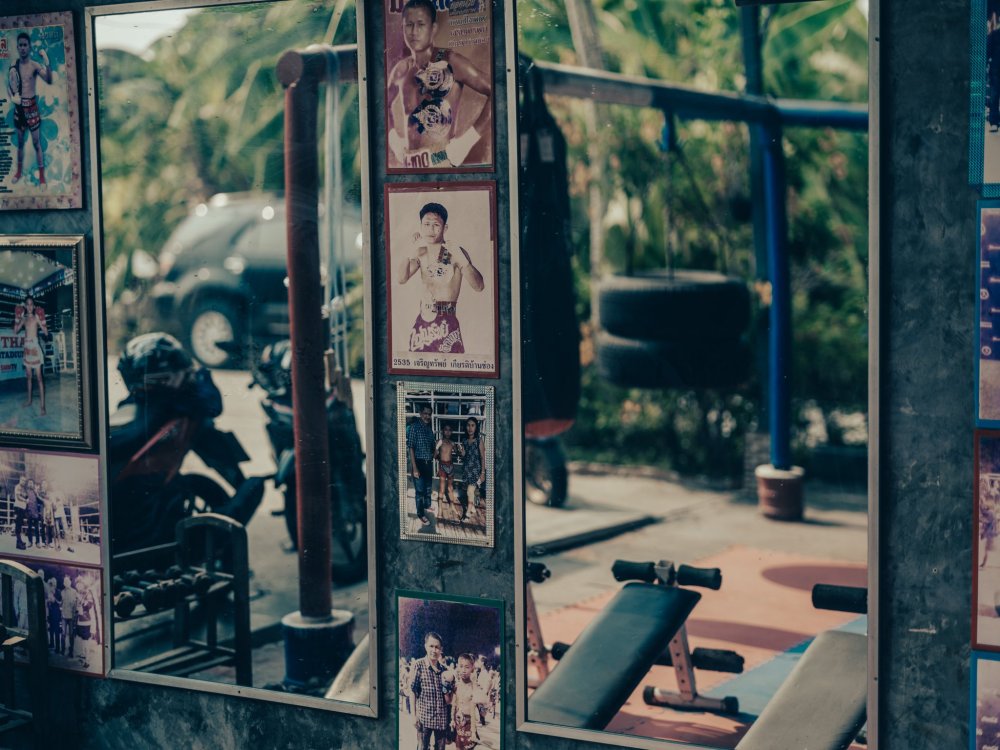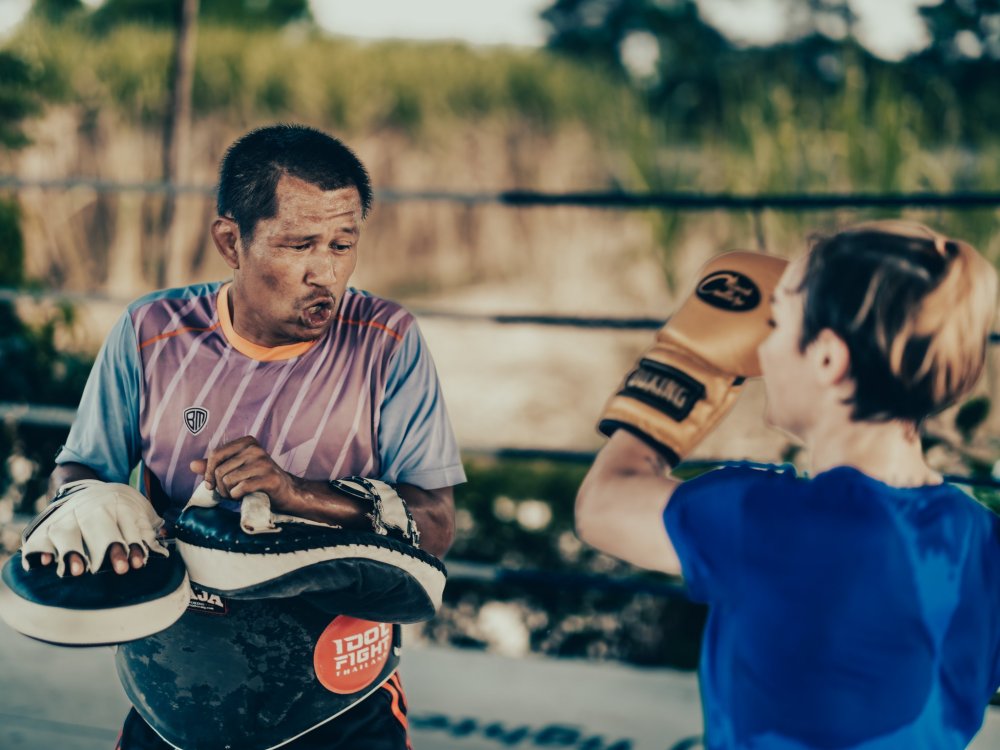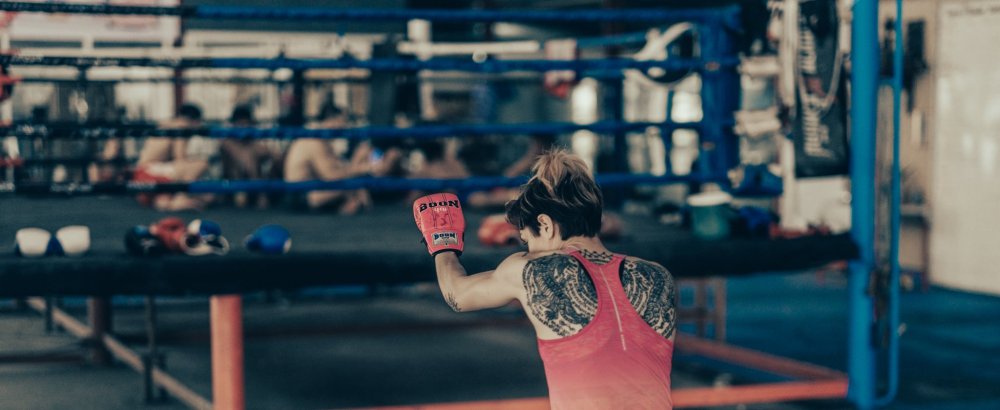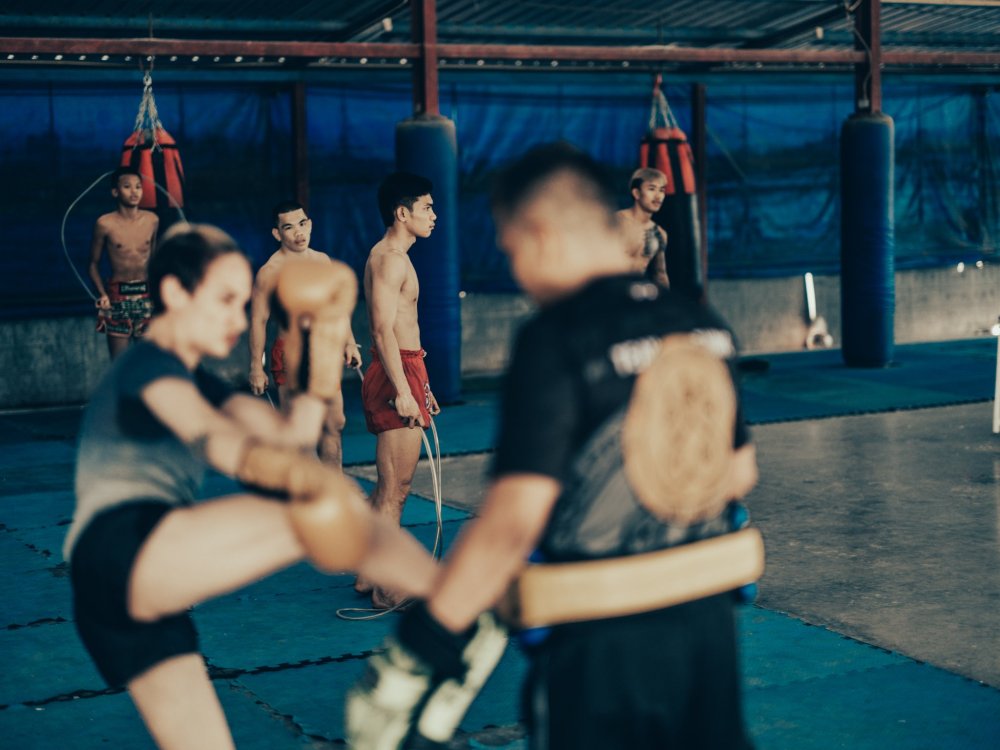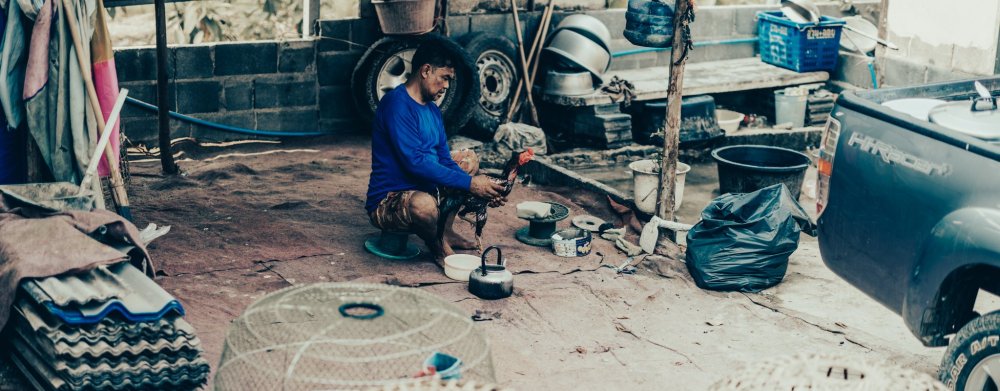Leaderboard
Popular Content
Showing content with the highest reputation on 04/13/2023 in all areas
-
The Farangification of Muay Thai This is just a little personal journaling. Usually I like to write on History or Philosophy but today it's just a sense of relief that I unexpectedly experienced over the last few days, filming with Sylvie for our documentary project. This strange sense of ease that came over me made me realize just how much a tension had filled my Muay Thai mind over the last several years, as I watched rather quiet changes creep across the landscape of Thailand's Muay Thai, most of the time with rather small, innocuous steps, but then also suddenly with vast lunges (like for instance the utter change of Lumpinee itself from National Stadium and the acme symbol of Thai excellence, to really a commercial space for Muay Thai tourism, not much different in philosophy than stadia found on the Southern islands or peninsulas). There just has been a rather powerful change in Thailand's Muay Thai, in that so much of it now is "for us" (that is to say, the "us" of Westerners, of which I'm a part). It's now been - slowly, or quickly - redesigned for "us" to watch, and maybe more importantly, for "us" to participate in (and win in). The rare spectacle of the 1990s, during the Golden Age, where hyper aggressive Western Kickboxers would face off against outsized Thais, just for the circus of it, while Lumpinee and Rajadamnern put on the highest combat sport fights on the planet, Thais against Thais, that circus now has become the standard...the norm. (And, a new generation of Thai audience before a buffet of entertainment options has embraced it, for excitement sake.) And, it's not only in the stadia, it's quietly in the gyms. Thai gyms, even high levels, or the highest level (ie, most politically powerful) have had their gym cultures impacted by the Westerner. They are more and more catered to the Western (and non-Thai) fighter, bending their sense of self toward its gaze, changing their training methods, their reason for being, toward the Globe. Large gyms now, gyms that shape Bangkok promotions, are run by Westerners, and Westerners are holding pads, guiding fighter development. The entire edifice is now leaning West. Of course Westerners who come to Thailand to seriously train and fight often love it, because the Thai gaze is turned to them, and when they arrive they find things that are familiar, more of who they already are (as opposed to, for example, fighters like Anne Quinlan and John Wayne Parr in the 90s who had to conform themselves to very unfamiliar spaces in order to work into gyms). And, when you fight you have a much better chance of winning, because the Entertainment rules have been bent toward you, toward your skills, and more importantly toward your aesthetics...what you think fighting is. More and more the sense of the foreign, the sense that you have come to a place where everything you thought was implied by fighting was perhaps wrong, is being weeded out. This is the Globalization of the sport. It's Thainess is starting to vanish. A great deal of this was accelerated by the COVID epidemic. As much as 20% of the Thai economy is tied to Tourism and all the connectivity between world-bound humans that facilitated the spread tourism also facilitated the spread of an epidemic. Thailand was put into a potential economic shock, and in coming out of the COVID lockdowns Thailand found itself in a difficult place. They either needed to lean away from, or lean into, tourism on the rebound. Thailand leaned hard into it. Many of the changes to Thailand's Muay Thai in the last couple of years, including the Internationalization of Lumpinee stadium (the loss of its prestigious ranking system and belts) has been an all out effort to recapture the Western tourist (and eventually the Chinese tourist - most of the Max Muay Thai influence comes from the promotional redesign of the sport around bussed-in Chinese tourism, a standard component of pre-paid tours). It could be said that Lumpinee has become something like a highly developed, richly promoted version of Bangla Stadium, with almost every fight between a Thai and a non-Thai. This is in keeping with just the brute reality that the appeal of Thailand to foreigners is vital. Muay Thai is for foreigners, it's tourism rather than culture. Over the last several years, as training methods have changed in gyms, with more and more memorized "combos" being held for fighters, even as non-Thais have taken over training itself, acquiring places of authority within the culture, the gym has become a less-Thai space, often in hidden, not-easy to see ways. Very often as the foreigner we can't actually "see" when a culture bends itself toward us, because it's "for" us. We assume that this is either just "natural", or as it is bending towards us over time, our ease with it comes with just acclimation. I remember a few years ago when a Westerner asked the lead kru of a family gym "What is your favorite combination?" This question was nearly untranslatable into Thai at the time...because the idea of a rehearsed and repetitively trained "combination" as a core of training wasn't in the Thai landscape, at least in this gym. (There will be Westerners who read this and be mystified by the idea that there could be training without "combos". I talked once with a very successful Western coach who relies on them heavily and he was incredulous that there was such a thing.) It would be like asking someone who speaks English "What are some of your favorite phrases?" This compartmentalized, mechanized concept of fight fluency was still foreign, at least at this gym. Muay Thai was more like a language, and taught like a language through immersion. This is just to say, as the Western student has become embraced in the wave of reclaimed Tourism, the very concept of training and its pedagogy has changed, very often in a spirit of accommodation (more correction, more mechanics), but also sometimes in a spirit if imitation and "improvement". There has always been in the back of the mind of Thai culture that it could be bettered by more "modern" (ie, historically Westernized) ways, this suspicion has lasted for more than 150 years, so this transition towards Western concepts of training is not without willing Thai ascent. Protein powders and mythically powerful supplements are also involved in this modernization toward the Western eye and mind. There is always an element within the culture which will feel that turning toward the West is a sign of improvement (the presence of Treadmills, heart rate monitors, or other equipment is a common symbol or statement of "modern" training...you could find such signatures of "modernity" all the way back to Thanikul gym in the Golden Age), and leaving behind the provincial or superstitious, the "backward", even though so many of the Thai ways that make up the process and history of Muay Thai are the very things that made it the best fighting art in the world, and their fighters the best fighters in the world as well. Those of the West that come to Thailand to witness the Muay Thai of Thailand often do so because they do "fighting" like nobody else, with the sense that all of the modernization that the West pats itself on the back for isn't really the path to elite skill sets. That this battle between cultures plays out now on promotional stages which have been skewed to actually produce Western (and other non-Thai) wins, is just the change of the measure. All this is to say, there has been buried within me a kind of abiding sadness, I think, something I was not completely aware of in its depth. A pessimism. We experience a lot of different Muay Thai spaces and many of them read as very "Thai". We hang out with legends of its past greatness. We go and visit Rambaa's gym full of kids. Sylvie trains in small gyms...but all of these experiences are also shot through with transformations toward the West. Legends now not only teach their own Muay, learned from decades at or in the ring, but also teach things they've picked up from licensing seminars they've taken, or from watching successful other Thai instructors doing seminars. (I remember very accomplished Thai ex-fighters watching Saenchai giving a seminar, taking notes. When you train with a Thai great they may be teaching you something they learned THIS year.) Rambaa's little kaimuay plays UFC fights on a flat screen and has a cage. The little Thai gyms Sylvie trains at are also impacted by Westerners, both in culture and in method. This week's experience just made me terribly aware of how few "non-Western" Thai spaces there are that we run into now, a change in the decade that we've been here. But the reason for hope came because on a single day we ran into two completely different Thai spaces which had almost no Western fingerprint. And, because these spaces did not feel rare. They did not feel like a vanishing species. Instead they just felt like a layer of Muay Thai culture that exists just beyond the curtain which has been drawn to keep in all the Western or International attention. The first of these was Chor. Hapayak gym, North of Bangkok. You encounter these gyms which have a kind of citadel'd, "keep out" nature. Paranchai in the South is a bit like this, or Pinsinchai gym in Bangkok. The Muay Thai can feel very cloistered, in a closed social system governed by a single head man. This gym had that feel. A big, extremely muscular pit bull galloped hard after a small truck down the one dusty lane that lead to the gym, barking hard. He was a unit. When he came to sniff at us a Thai boy was sent to grab and fence him, put with a bitey Rotty who was already on lock down (who honestly looked very sweet). I mention this because the dog's response to even an ice-cream cart coming showed how infrequent outside visits are - his robust guardianship was sidelined in accomodation.) Mostly though this hidden away feeling came to me in the way that all the Thai boys jumped rope together, and then sat altogether in the ring after training in a very small circle. It just was very clear that all they had was each other. This boundness comes out of the social condition of the kaimuay, and out of perhaps aspects of more traditional culture which would draw critique from a concept of personal liberty and free agency. The Muay Thai of Thailand though comes out of these social forms. When Sylvie asked kru Bangsaen if Westerners would be welcome to train there he said "Yes"...but then he added "But they can't leave."...which meant that you couldn't come and go as you will, as if you are are on an adventure tourism vacation. I'm not even sure what entirely was entailed in "They can't leave." but it was strongly connected to this sense of boundness, and ultimately a family of a kind. The freedoms of fighters are tightly monitored. This just wasn't a gym space that was YET bent toward the Westerner. They had the legendary fighter Wangchannoi helping out, but he did not appear to hold high status in the gym. He was just helping out with the flow of bound work. But...there were still signs that the West was coming. Fighters were encouraged to come and shake hands with us (beyond the Thai wai). One kid showed his cultural fluency by giving me a bro handshake and hug. And, when we came the next day the kru had changed his mind and told Sylvie that Westerners were wanted at the gym, that they could come and go as they pleased, could stay at this hotel or such, after 24 hrs of thought. Already the boundness of the gym was eroded, in a single day. There is also some sense in which Westerners might hear of such a place and be excited by it. Where is the next "unspoiled" beach!?...so we can go and start its spoiling. A large part of the urge to travel is to find what you are not. In the West we want to find unpolluted beaches because all our beaches are grimy and polluted. Sitting in an emerald bay with blemishless sand is what we cannot have on our own. So, for some, there is a sense in which the traditional ways of Muay Thai may hold not only technical secrets, but also emotional secrets to what fighting is. Coming to a place which does not reflect your own Western face back to you, as if in a mirror, provides a sense of relief, and even can be a path to transformation, or healing from the wounds or pressures that being a Westerner incurs. And, it should be noted that a great deal of what Sylvie and I do is opening keyholes into people & knowledge that cannot be easily found. And each time we keyhole there is a risk of its transformation. Now, for instance, Chor Hapayak gym is open to Westerner fighters (students?) when before it seemed like it wasn't something they had ever thought much about. The ethical reef I find myself drawn to in these questions is that of ecology. If you want to find pristine beaches then work to keep them pristine. If you want to find "authentic" Muay Thai gyms, then work to keep them that way, which means maybe taking stances on larger commercial and economic trends in the sport in Thailand. Be aware of what you are changing it when you touch something. And, it is not without merit to note that as women have experienced more freedom of opportunity in Thailand, not only in terms of fighting, but much more notably in terms of training, along has come with this many of these other globalizing changes. That, as well pull more traditional forms of being toward an international scale of gendered equality and freedom, other aspects of the culture may be attached to those threads. The much more aggro-fighting aesthetics of the West are coupled to, let's say, MMA's embrace of the marketing of female fighters. It is not easy to parse these differences. At Chor. Hapayak gym Sylvie was asked not to train in the rings, as a woman, governed by the same beliefs that kept her out of the clinch ring of Lanna Muay Thai so many years ago, in Chiang Mai, and that barred women from even touching the ring of Lumpinee. With the sweeping embrace of Western (and International) values of equality, so too have come other somewhat incipient value changes towards fighting itself: Its promotional violence, it's aggression scoring, its lack of control aesthetics. These are not disconnected, though their relationship to each other is not directly causal either. In some odd sense, the dream of some women to eventually fight and compete at a high level at Lumpinee Stadium (a dream that Sylvie had once) actually in a monkey's paw way involved the absolute erasure of what Lumpinee was as an ideal stage of hypermasculine, control Muay Thai). The other experience of relief and hope was a very different experience. We had trained and filmed with the former Fighter of the Year Jaroensap (he won in 1993) at his small but active gym in Bangkok some years ago. I'm not entirely sure why he moved locations. My guess is that it too had to do with the ways that COVID impacted the sport of Muay Thai, shrinking the sport as many fighters prematurely retired, returning to the provinces to more modest, more economically sustainable oriented ways of life. In any case Jaroensap had moved his gym from in the city to high above Rangsit, to be found now at his family home where he had built a substantial ring and hung a few bags. It was as if he had reshored himself within the local community and created a Muay Thai anchorage. When we trained and filmed with him this time he said he had 3 fighters on cards the next day, so he had plenty of time to train...the gym is quite small. But it is filled with his personality, and his elite knowledge of the sport. How to make a fighter...how to fight. His work with Sylvie consisted of padwork, followed by sparring, and it was evident to her that he works personally with his students, on a daily basis, in just this way. Something that didn't feel as proximate at the old location, the first time we filmed with him. We brought Karuhat with us (who had fought with Jaroensap in their primes) and as Sylvie trained in the ring the grandma, the wife, a cousin (who Karuhat said was a gambler) all ate toothsome snacks and talked with animation about things we could not hear. Bright sunlight and what looked like sugar cane much taller than a man waved in a continuous, running breeze. There was a legend of the sport who trains his son and a few local boys in the ring he built, in bright sunlight, passing on his personal, body-earned knowledge, as the family sits below the ring and talks vibrantly about the day. All of this was just Thai Muay Thai. There was no mirror to look into and see one's own face reflected back. Sylvie was just a very odd anomaly there, a 100 lb woman being tossed around the ring, trying to learn and respect Jaroensap's knowledge, his joy for the sport's form...and the grandma laughed loudly every time Sylvie fell. Next door a few young children lounged as the heat of the day faded, and some men sat and carefully washed the fighting roosters under their care as they watched Sylvie and Jaroensap in the ring; quietly, some curiosity, but only long enough to finish their tasks. I wanted to write more in journaling way, because it really was how I was impacted by these gym experiences. We've been in a lot of gyms, trained and Syvie's fought in incredible variety, but this was the first time I've just had a sense of hope wash over me after filming. It made me realize just how much I was holding a pessimism in my heart because of just how farangified everything seems to have become. And even with the sense that we've been a part of it, as we hope to make people aware of vanishing aspects of Muay Thai that are at risk of being lost and are worth saving, worth respecting. I was very surprised by this sense of relief, because I had always had the sense that Muay Thai doesn't really belong to the big stadia in the Capital, but more that it belongs to the people of Thailand, to the provinces, and the fighters of yore, to the customs and ways of thinking about what fighting could mean, in a positive way, in a way far beyond "entertainment". We left the day, driving home in the fatigue of Bangkok traffic snarls and a haze of pollution which could be industrial smog or smoke from burning farmer fields, with a sense that the Muay Thai of Thailand still exists in resilience, in resistance to even the transformation of Lumpinee Stadium into a venue, and the endless farang vs Thai matches that fill television and mobile phone screens. For more than 150 years of Siamese & Thai "civilization" in its imitation and absorption of the West Thailand's Muay Thai has persisted, through its own kernel, and there was this sense in me that it's still here, living, thriving, just beyond the Globalizing reach of the Western and non-Thai hand. Muay Thai, like any expression of a culture, is a Way of Life. We should have an ecological view towards the ways of life that hold special knowledge and meaning, even as we criticize or attempt to improve them. I actually believe that Thailand's Muay Thai, in so far as it is a cultural expression of a people, connects us to some of the most meaningful and even rite-driven aspects of what fighting and combat sports may mean. It is far more than "entertainment" and insofar as it should be a tourism draw that could best be founded on its exceptionalism, which includes the cultural values it has come to embody over the last century if not quite a bit more.2 points
-
From my experience, you'd never be expected to change in front of anybody. Lots of folks arrive in their training outfit and leave in it, but there are almost always bathroom where you can change in private and shower, etc., that aren't group spaces. I would imagen that you'd be asked about the scars on your chest, just because both Thais and other nationalities training in the space tend to be forward in asking questions about and pointing out each other's bodies. Not necessarily in a mean way, but not always in a way that feels very good, either. If you have some kind of document from your doctor, I imagine you could keep that on your person for any issues at customs, regarding bringing your testosterone with you. It is, afterall, a medication. I don't believe it's a heavily regulated medicine in Thailand (in Pattaya there are bodybuilders who do their HGH and steroid cycles here, although the market for that is technically not legal but definitely not heavily enforced). Regarding your worries about fighting, those don't seem pretty common. You just have to decide whether it's meaningful for you to do it or not. If you do choose to fight in Thailand, I highly recommend you do not disclose being Trans, simply because it will severely complicate the task of finding an opponent. You'd be entering into a low-level, low-profile kind of fight situation and, since you pass, matching you with another inexperienced man would be the thing to do. If you disclose being Trans, they might be obligated to match you against a cis woman, which would require you to more or less "perform" being a woman for the fight (you'd likely have to wear a sports bra, for example, and you'd be referred to as a woman by the announcer, etc.) That said, many people come and train in Thailand without fighting and have wonderful and fulfilling experiences. But it's also a much more straight forward opportunity for you to get to fight than if you try to do so in the West.1 point
-
Hi, Yodkhunpon uses the gallop to cut off the ring and corral the opponent; what Namsaknoi is doing is getting outside the opponent's guard, which is why it's used from so close. He moves the opponent's guard with his own arms and kind of "ladder climbs" their guard to slip to the outside, where he has a pretty open shot and they have virtually no defense. This can only happen from very close; if you do it from far away, the opponent just adjusts their feet and they are facing you again.1 point
Footer title
This content can be configured within your theme settings in your ACP. You can add any HTML including images, paragraphs and lists.
Footer title
This content can be configured within your theme settings in your ACP. You can add any HTML including images, paragraphs and lists.
Footer title
This content can be configured within your theme settings in your ACP. You can add any HTML including images, paragraphs and lists.

